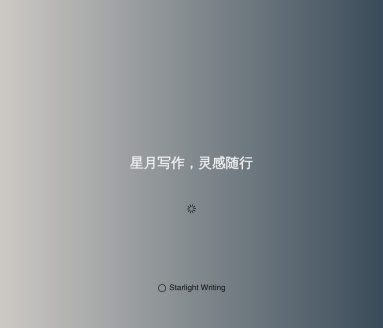测试 golang 多行输出的匹配方法
来源:stackoverflow
2024-03-05 09:00:28
0浏览
收藏
你在学习Golang相关的知识吗?本文《测试 golang 多行输出的匹配方法》,主要介绍的内容就涉及到,如果你想提升自己的开发能力,就不要错过这篇文章,大家要知道编程理论基础和实战操作都是不可或缺的哦!
问题内容
我有以下代码可以生成一些字符串输出:
package formatter
import (
"bytes"
"log"
"text/template"
"github.com/foo/bar/internal/mapper"
)
// map of template functions that enable us to identify the final item within a
// collection being iterated over.
var fns = template.funcmap{
"plus1": func(x int) int {
return x + 1
},
}
// dot renders our results in dot format for use with graphviz
func dot(results []mapper.page) string {
dottmpl := `digraph sitemap { {{range .}}
"{{.url}}"
-> { {{$n := len .anchors}}{{range $i, $v := .anchors}}
"{{.}}"{{if eq (plus1 $i) $n}}{{else}},{{end}}{{end}}
} {{end}}
}`
tmpl, err := template.new("digraph").funcs(fns).parse(dottmpl)
if err != nil {
log.fatal(err)
}
var output bytes.buffer
if err := tmpl.execute(&output, results); err != nil {
log.fatal(err)
}
return output.string()
}
它生成如下输出:
digraph sitemap {
"http://www.example.com/"
-> {
"http://www.example.com/foo",
"http://www.example.com/bar",
"http://www.example.com/baz"
}
}
下面是对此功能的测试...
package formatter
import (
"testing"
"github.com/foo/bar/internal/mapper"
)
func testdot(t *testing.t) {
input := []mapper.page{
mapper.page{
url: "http://www.example.com/",
anchors: []string{
"http://www.example.com/foo",
"http://www.example.com/bar",
"http://www.example.com/baz",
},
links: []string{
"http://www.example.com/foo.css",
"http://www.example.com/bar.css",
"http://www.example.com/baz.css",
},
scripts: []string{
"http://www.example.com/foo.js",
"http://www.example.com/bar.js",
"http://www.example.com/baz.js",
},
},
}
output := `digraph sitemap {
"http://www.example.com/"
-> {
"http://www.example.com/foo",
"http://www.example.com/bar",
"http://www.example.com/baz"
}
}`
actual := dot(input)
if actual != output {
t.errorf("expected: %s\ngot: %s", output, actual)
}
}
失败并出现以下错误(与输出格式间距有关)...
--- fail: testdot (0.00s)
format_test.go:43: expected: digraph sitemap {
"http://www.example.com/"
-> {
"http://www.example.com/foo",
"http://www.example.com/bar",
"http://www.example.com/baz"
}
}
got: digraph sitemap {
"http://www.example.com/"
-> {
"http://www.example.com/foo",
"http://www.example.com/bar",
"http://www.example.com/baz"
}
}
我尝试调整我的测试 output 变量,以便间距与实际代码实际输出的内容一致。那没有用。
我还尝试在我的输出变量和实际输出内容上使用 strings.replace() ,奇怪的是我的函数的输出(即使它是通过 strings.replace 传递的)仍然多行(因此测试会失败)?
有人知道如何使输出一致以进行代码验证吗?
谢谢。
更新
我尝试了@icza建议的方法,但测试仍然失败,尽管测试中的输出看起来更像是预期的:
=== RUN TestDot
--- FAIL: TestDot (0.00s)
format_test.go:65: expected: digraph sitemap {
"http://www.example.com/"
-> {
"http://www.example.com/foo",
"http://www.example.com/bar",
"http://www.example.com/baz"
}
}
got: digraph sitemap {
"http://www.example.com/"
-> {
"http://www.example.com/foo",
"http://www.example.com/bar",
"http://www.example.com/baz"
}
}解决方案
如果你想忽略格式,可以使用strings.fields。
output := strings.Fields(`digraph sitemap {
"http://www.example.com/"
-> {
"http://www.example.com/foo",
"http://www.example.com/bar",
"http://www.example.com/baz"
}
}`)
actual := strings.Fields(Dot(input))
if !equal(output,actual) {
// ...
}
其中 equal 是一个比较两个切片的简单函数。
终于介绍完啦!小伙伴们,这篇关于《测试 golang 多行输出的匹配方法》的介绍应该让你收获多多了吧!欢迎大家收藏或分享给更多需要学习的朋友吧~golang学习网公众号也会发布Golang相关知识,快来关注吧!
版本声明
本文转载于:stackoverflow 如有侵犯,请联系study_golang@163.com删除
 如何使用 paho.mqtt.golang 发布 MQTT 版本 5 的属性?
如何使用 paho.mqtt.golang 发布 MQTT 版本 5 的属性?
- 上一篇
- 如何使用 paho.mqtt.golang 发布 MQTT 版本 5 的属性?

- 下一篇
- 混淆了 Golang 中的结构数组
查看更多
最新文章
-

- Golang · Go问答 | 1年前 |
- 在读取缓冲通道中的内容之前退出
- 139浏览 收藏
-

- Golang · Go问答 | 1年前 |
- 戈兰岛的全球 GOPRIVATE 设置
- 204浏览 收藏
-

- Golang · Go问答 | 1年前 |
- 如何将结构作为参数传递给 xml-rpc
- 325浏览 收藏
-

- Golang · Go问答 | 1年前 |
- 如何用golang获得小数点以下两位长度?
- 478浏览 收藏
-

- Golang · Go问答 | 1年前 |
- 如何通过 client-go 和 golang 检索 Kubernetes 指标
- 486浏览 收藏
-

- Golang · Go问答 | 1年前 |
- 将多个“参数”映射到单个可变参数的习惯用法
- 439浏览 收藏
-

- Golang · Go问答 | 1年前 |
- 将 HTTP 响应正文写入文件后出现 EOF 错误
- 357浏览 收藏
-

- Golang · Go问答 | 1年前 |
- 结构中映射的匿名列表的“复合文字中缺少类型”
- 352浏览 收藏
-

- Golang · Go问答 | 1年前 |
- NATS Jetstream 的性能
- 101浏览 收藏
-

- Golang · Go问答 | 1年前 |
- 如何将复杂的字符串输入转换为mapstring?
- 440浏览 收藏
-

- Golang · Go问答 | 1年前 |
- 相当于GoLang中Java将Object作为方法参数传递
- 212浏览 收藏
-

- Golang · Go问答 | 1年前 |
- 如何确保所有 goroutine 在没有 time.Sleep 的情况下终止?
- 143浏览 收藏
查看更多
课程推荐
-

- 前端进阶之JavaScript设计模式
- 设计模式是开发人员在软件开发过程中面临一般问题时的解决方案,代表了最佳的实践。本课程的主打内容包括JS常见设计模式以及具体应用场景,打造一站式知识长龙服务,适合有JS基础的同学学习。
- 543次学习
-

- GO语言核心编程课程
- 本课程采用真实案例,全面具体可落地,从理论到实践,一步一步将GO核心编程技术、编程思想、底层实现融会贯通,使学习者贴近时代脉搏,做IT互联网时代的弄潮儿。
- 516次学习
-

- 简单聊聊mysql8与网络通信
- 如有问题加微信:Le-studyg;在课程中,我们将首先介绍MySQL8的新特性,包括性能优化、安全增强、新数据类型等,帮助学生快速熟悉MySQL8的最新功能。接着,我们将深入解析MySQL的网络通信机制,包括协议、连接管理、数据传输等,让
- 500次学习
-

- JavaScript正则表达式基础与实战
- 在任何一门编程语言中,正则表达式,都是一项重要的知识,它提供了高效的字符串匹配与捕获机制,可以极大的简化程序设计。
- 487次学习
-

- 从零制作响应式网站—Grid布局
- 本系列教程将展示从零制作一个假想的网络科技公司官网,分为导航,轮播,关于我们,成功案例,服务流程,团队介绍,数据部分,公司动态,底部信息等内容区块。网站整体采用CSSGrid布局,支持响应式,有流畅过渡和展现动画。
- 485次学习
查看更多
AI推荐
-

- ChatExcel酷表
- ChatExcel酷表是由北京大学团队打造的Excel聊天机器人,用自然语言操控表格,简化数据处理,告别繁琐操作,提升工作效率!适用于学生、上班族及政府人员。
- 3322次使用
-

- Any绘本
- 探索Any绘本(anypicturebook.com/zh),一款开源免费的AI绘本创作工具,基于Google Gemini与Flux AI模型,让您轻松创作个性化绘本。适用于家庭、教育、创作等多种场景,零门槛,高自由度,技术透明,本地可控。
- 3534次使用
-

- 可赞AI
- 可赞AI,AI驱动的办公可视化智能工具,助您轻松实现文本与可视化元素高效转化。无论是智能文档生成、多格式文本解析,还是一键生成专业图表、脑图、知识卡片,可赞AI都能让信息处理更清晰高效。覆盖数据汇报、会议纪要、内容营销等全场景,大幅提升办公效率,降低专业门槛,是您提升工作效率的得力助手。
- 3565次使用
-

- 星月写作
- 星月写作是国内首款聚焦中文网络小说创作的AI辅助工具,解决网文作者从构思到变现的全流程痛点。AI扫榜、专属模板、全链路适配,助力新人快速上手,资深作者效率倍增。
- 4688次使用
-

- MagicLight
- MagicLight.ai是全球首款叙事驱动型AI动画视频创作平台,专注于解决从故事想法到完整动画的全流程痛点。它通过自研AI模型,保障角色、风格、场景高度一致性,让零动画经验者也能高效产出专业级叙事内容。广泛适用于独立创作者、动画工作室、教育机构及企业营销,助您轻松实现创意落地与商业化。
- 3938次使用
查看更多
相关文章
-
- GoLand调式动态执行代码
- 2023-01-13 502浏览
-
- 用Nginx反向代理部署go写的网站。
- 2023-01-17 502浏览
-
- Golang取得代码运行时间的问题
- 2023-02-24 501浏览
-
- 请问 go 代码如何实现在代码改动后不需要Ctrl+c,然后重新 go run *.go 文件?
- 2023-01-08 501浏览
-
- 如何从同一个 io.Reader 读取多次
- 2023-04-11 501浏览



